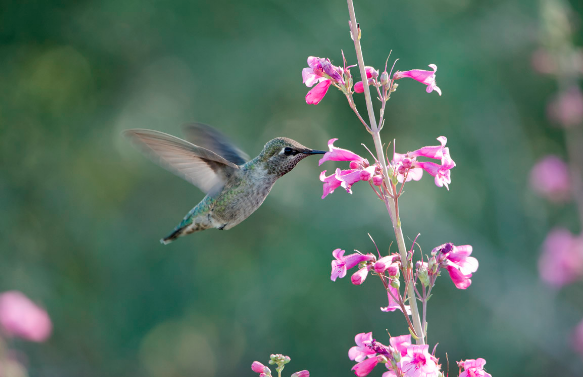A garden can be many things, it is pleasing on the eye, fulfilling for the soul and can bring so much joy to those who nurture and spend time within one. Another incredible function of a garden is to create a welcoming environment that is not just for people but one that supports wildlife.
Attracting things like hummingbirds, butterflies, lizards, and other creatures into your garden can be very simple if you start with the four basic ingredients: food, water, shelter, and space to raise their young.
Food includes flowers, fruits, and even seeds. Do this year-round and it will support the year-round resident wildlife as well as the migrating species.
Providing water to drink and bathe in is also important and sometimes overlooked. There are a few things you can do to optimize water availability in the garden. Situate the water in an open spot, which will deter predators. Birds are more likely to drink water if it is elevated and off the ground whereas butterflies get water and nutrients by sipping moisture from muddy spots on the ground. Keeping birdbaths clean is very important as it can help to avoid spreading diseases and also to eliminate mosquito larvae.
Plants that are native to your local area are more likely to thrive because they are better adapted to the local soils and microclimates and natives offer the greatest potential for attracting native insects, which are essential in any habitat. Here is a surprising fact, roughly 90% of all insect species that eat plants can eat only native plants and native insects attract other animals that eat them, particularly birds. Aim for high diversity in plant species as this will attract and support a wide array of animals.
Decreasing or removing your lawn altogether can be very helpful as it offers little in terms of habitat for wildlife. If you decide removing your lawn is not an option there are some suggestions for improvement and care: Punctuate it with native ornamental bunch grasses they will provide food and nesting material for animals. Mowing and watering less will also aid in this.
If you create continuous layers of foliage from the ground up to the treetops different creatures will use each zone.
Allow leaf litter to pile up, this wonderful natural mulch provides a habitat for insects and a place for seeds to accumulate. There are many benefits of this organic mulch layer that includes: conserving water, controlling weeds, reducing erosion, reducing dust, moderating extremes in soil temperature, and recycling organic material that will improve soil texture as it breaks down.
Leave dead trees or branches in place if they don’t pose a safety hazard as dead wood provides a habitat for cavity-nesting birds, mammals, and insects and the wood is a food source for insects and decomposing fungi.
Avoid pruning trees during nesting season—late winter to early summer for most bird species.
It is actually important to reduce grooming overall, brown is one of nature’s colors after all! You can use clippings to create brush piles, which provide cover, places to perch, and nesting material and allow some fruits and seeds to ripen provides food for many kinds of animals, some seeds may even germinate, adding a new generation of “free” plants for the next season.
Eliminating toxic pesticides is extremely important, birds, bats, lizards, frogs, and toads help control insects naturally. Let the critters help you achieve a balanced ecosystem in your garden… as it should be.


